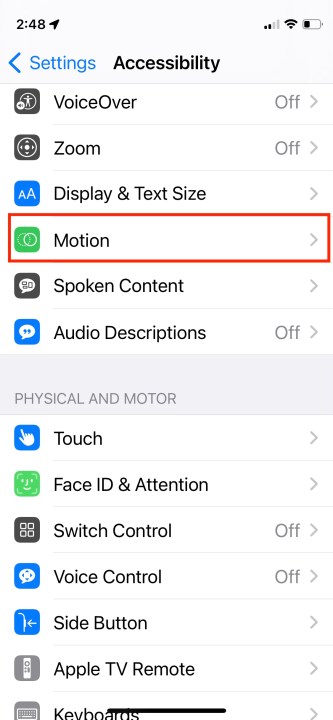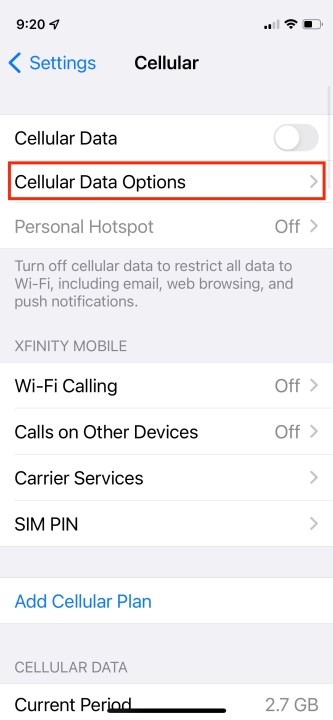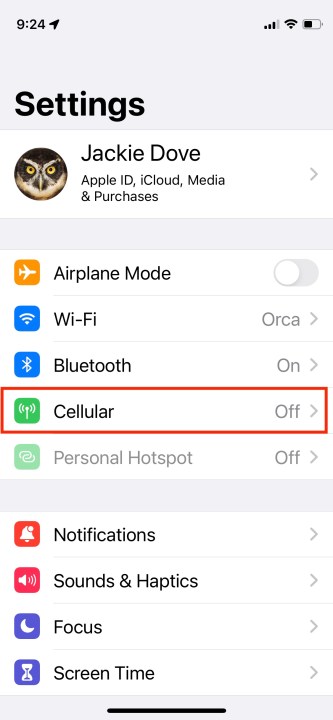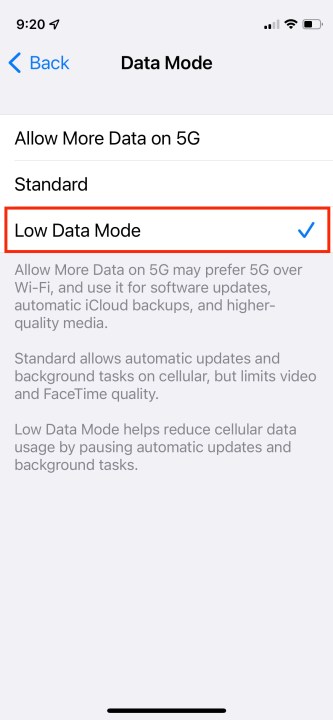One of the big attractions of Apple’s iPhone is its intuitive user experience — it just works. The iPhone often outperforms the competition, but every device begins to slow down with age. New iOS updates can be a double-edged sword, sometimes rendering older iPhone models even slower. It can be frustrating to see your once new, lightning-fast iPhone slowing to a crawl. Instead, try out our tips below to give it new life.
Tweak Transparency and Motion settings
Visual effects may look nice, but there’s a processing overhead. You can speed your phone up a little by turning them off or reducing them.
Step 1: Go to Settings > Accessibility.

Step 2: Choose Display and text size.

Step 3: Toggle Reduce transparency to On.

Step 4: Another method involves Settings > Accessibility > Motion and toggling on Reduce motion.
Turn your handset off and on again
These simple instructions are the tried-and-tested opening gambit of hardware support staff for a reason. Turning devices off and on again can often solve problems and boost performance.
Step 1: Press and hold the Sleep/wake button and slide the resulting switch to turn off your device.

Step 2: Once done, press and hold the Sleep/wake button again until you see the Apple logo appear.
Uninstall unused apps
Review all the apps and games on your iPhone and uninstall anything that you don’t use regularly. Be ruthless. They’re taking up space and potentially eating resources by running and updating in the background.
You can delete apps on iPhone by tapping and holding until all the apps go into jiggle mode or just tap and hold on the app icon you wish to delete and remove it from the popup menu by choosing Delete app.
Update to the latest iOS
Apple introduces newer versions of iOS regularly, not only to bring in new features and better security but also to improve overall performance. Check to see if an iOS update is available, and update accordingly.
Step 1: You can do this by going to Settings > General > Software update.
Step 2: Your iPhone will check for an update and will prompt you to Download and install if one is available.
Turn off Siri
Siri, Apple's personal assistant, can be handy, but there are a couple of features that you might consider turning off to boost performance.
Step 1: Siri can automatically suggest resources when you search in iOS 9 and later, but this feature can slow down your iPhone. To toggle it off, go to Settings > Siri and Search.

Step 2: If you have an iPhone 6S or newer, you can say “Hey Siri” at any time to summon Siri. You can turn off this feature via Settings > Siri and search and toggling off Listen for Hey Siri. Then, tap the Turn off Siri button.

Turn off automatic downloads
If your iPhone is the only device associated with your Apple ID, then you might want this on — or maybe it's not even needed.
If you own other Apple devices, you could be automatically downloading new apps and content purchases you made on another device that you don’t want on your iPhone.
Either way, to improve your iPhone's performance, you can shut down automatic background processes.
Step 1: Go to Settings > App Store, to find a section labeled Automatic downloads.

Step 2: Toggle off Automatic downloads.

Use Apple's default apps
Apple’s apps work most efficiently with the iPhone. They’re set as defaults for most major functions, such as email, navigation, and web browsing. If you want the smoothest and fastest performance, you should stick with them.
Turn off Background App Refresh
Some apps are constantly ticking in the background, syncing data and refreshing content. This activity can slow everything down and drastically reduce battery life.
Contrary to popular belief, closing down all apps is not the solution.
Go to Settings > General > *Background app refresh and turn it off completely or turn it off for selected apps.
The only difference is that those apps will sync when you launch them rather than constantly syncing in the background.
Throw out old files
Whether it be a video file, a photo that’s safely backed up, an old text message, or cached data, old files that you no longer need are a pointless drain on resources.
With some apps, it may be worth uninstalling them and then reinstalling to get rid of cached data.
Step 1: Go to Settings > General > iPhone storage and you can see what’s taking up the most space.
Step 2: Delete any app that you don’t need by tapping on it and then choosing Delete app.
Clear browsing history
One area where it’s relatively easy to get rid of superfluous files is Safari. This might initially slow down browsing, given that your iPhone will need to cache websites you visit again, but there will probably be a net performance gain in clearing out the junk.
Go to Settings > Safari > Clear history and website data.
Reset your iPhone
We recommend resetting your handset when troubleshooting to clear out some old data, at the cost of having to re-enter certain passwords and other settings. Check out our guide on how to factory reset an iPhone or how to reset an iPhone for full details.
A general reset will likely result in improved performance — just make sure that you back up important files first.
Go to Settings > General > Transfer or reset iPhone > Reset.
A more drastic approach is to go for the full factory reset via Settings > General > *Reset > Erase all content and settings.
Put your iPhone in Low Data Mode
A feature of iOS 13 and later, Low Data Mode restricts background network use. When that setting is enabled, automatic updates and background tasks are paused.
Step 1: Start with Settings > Cellular.
Step 2: Then go to Cellular data options > Low data mode and toggle the Low data mode switch to On.

























